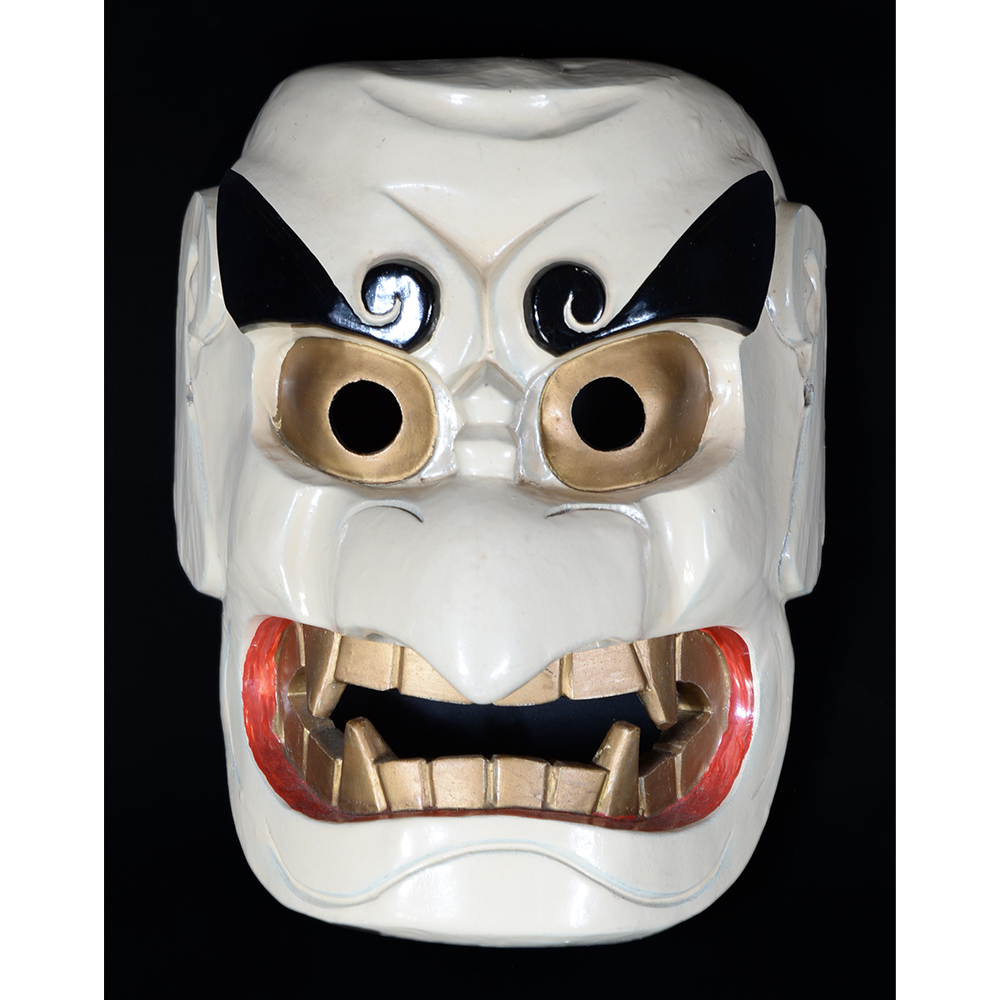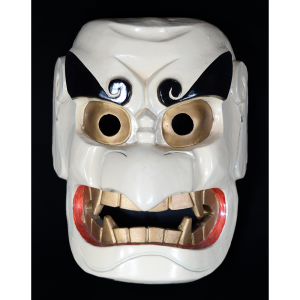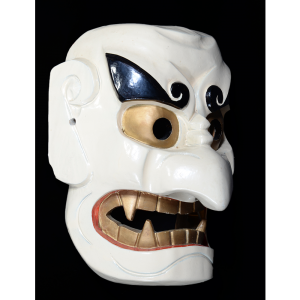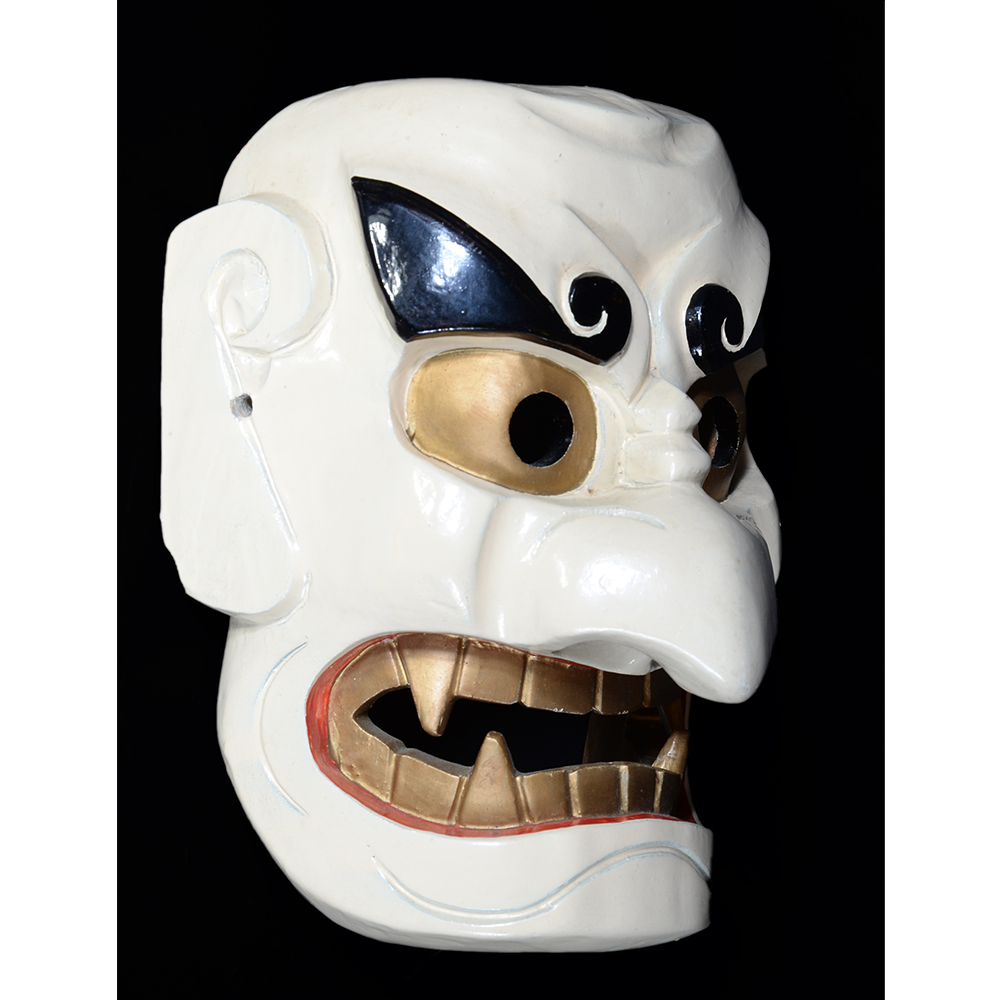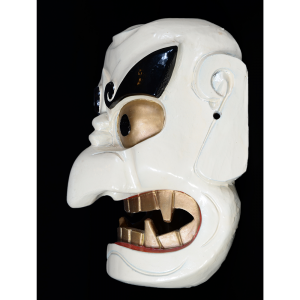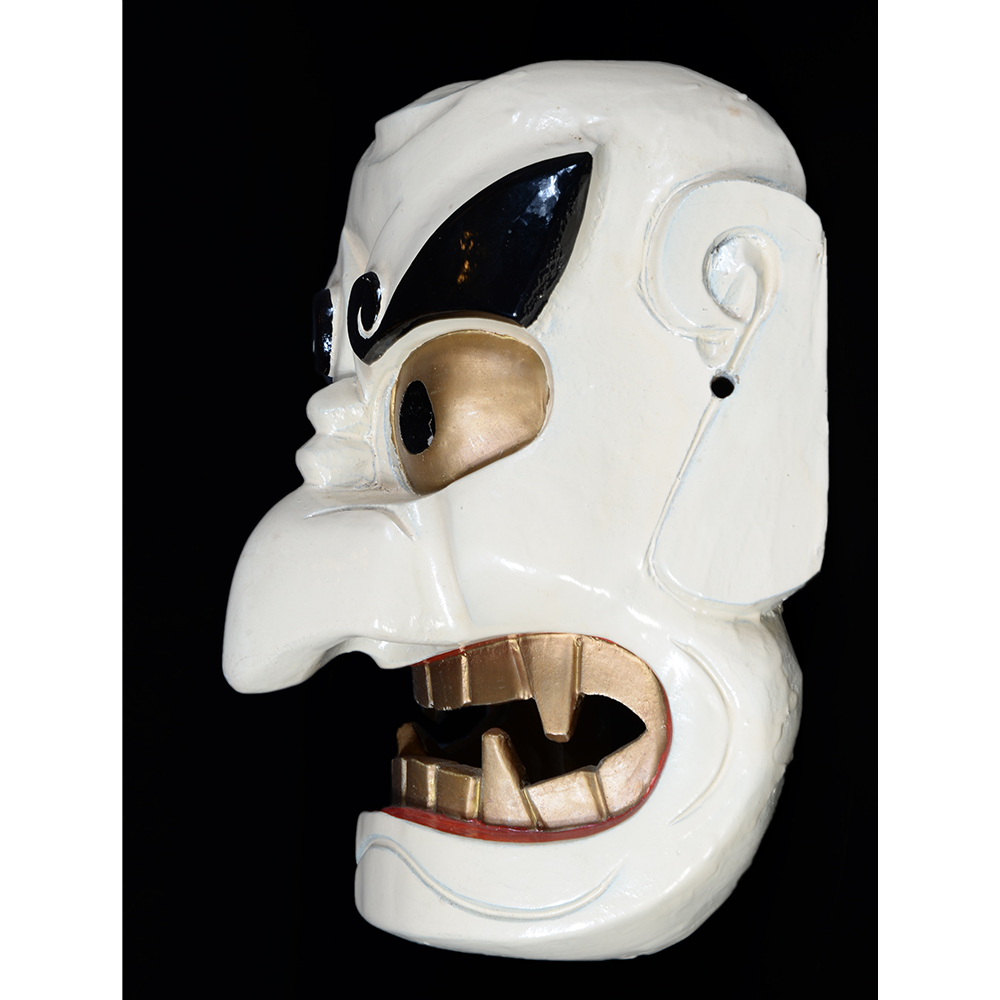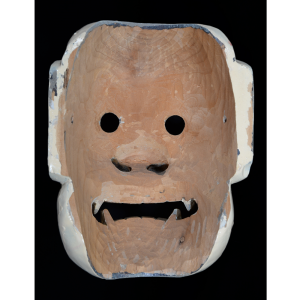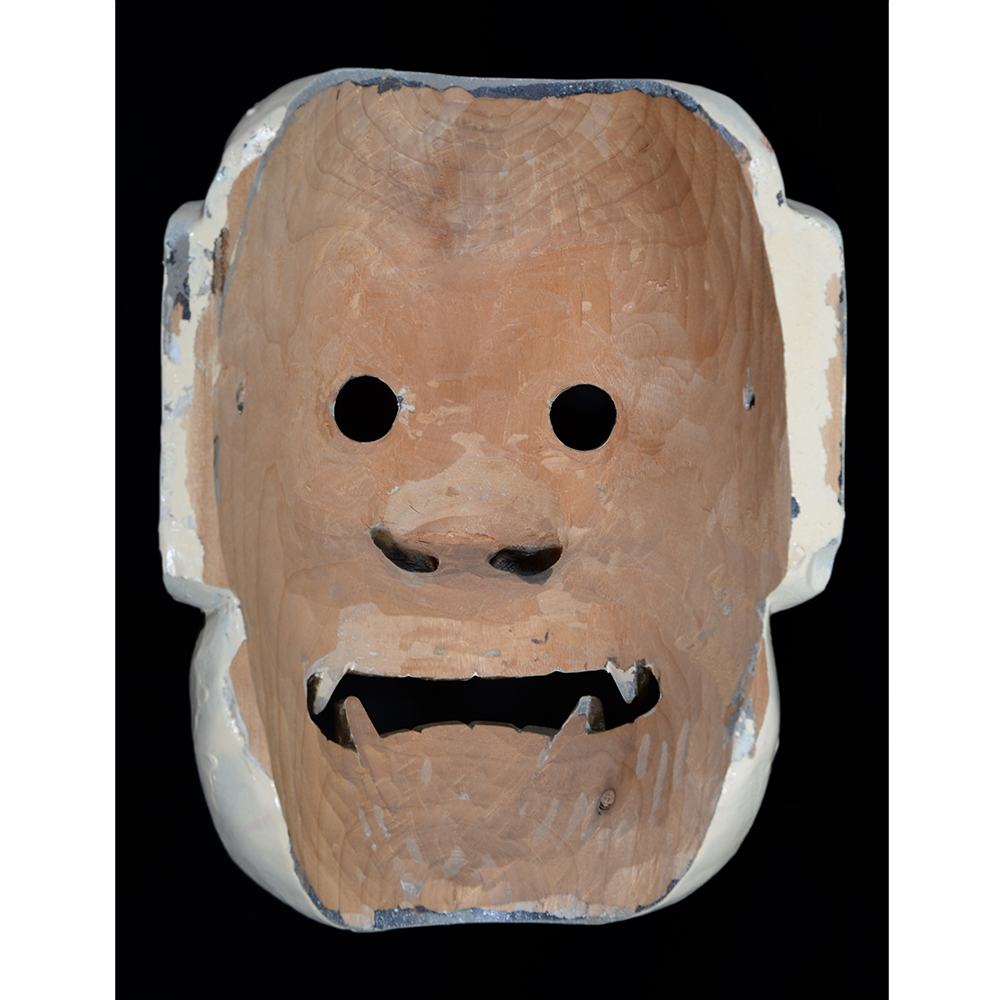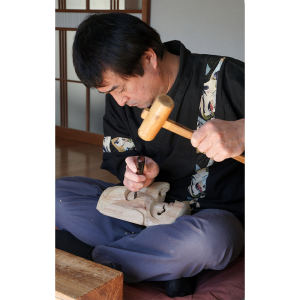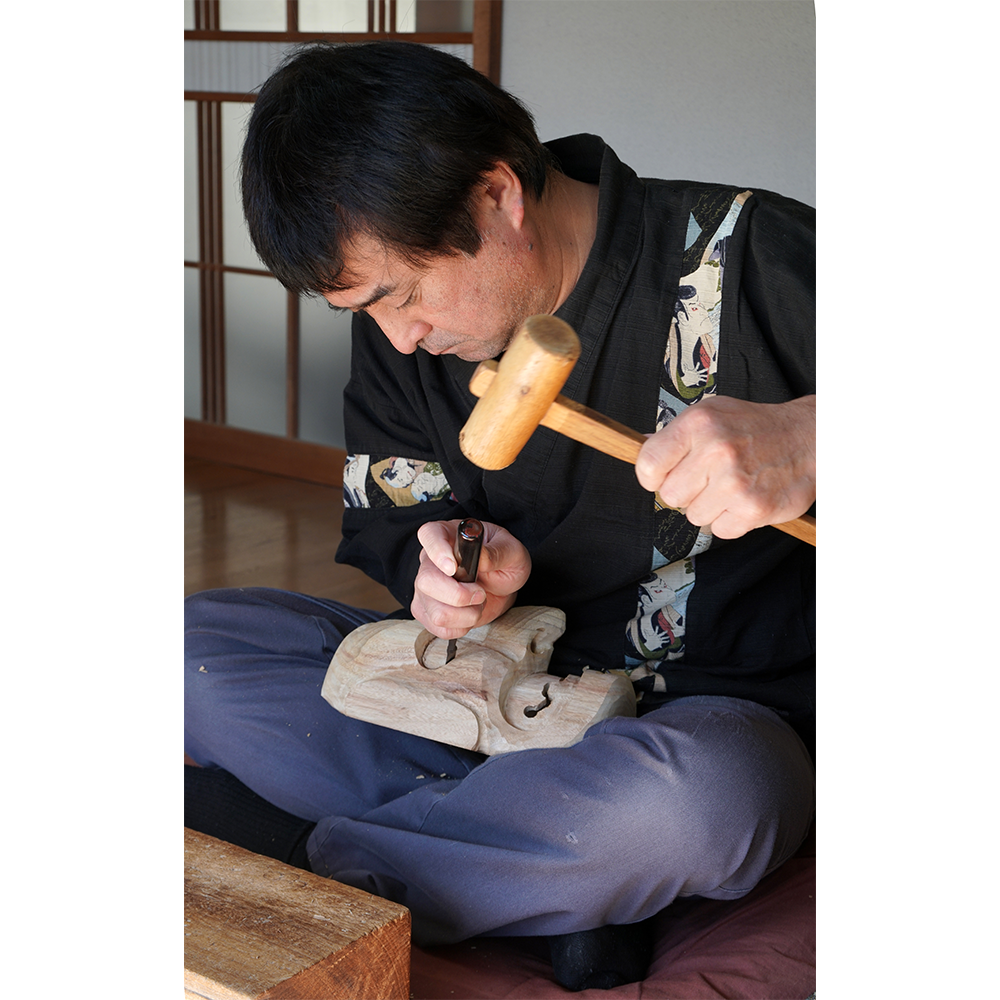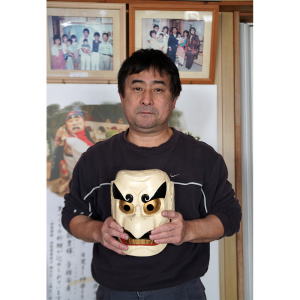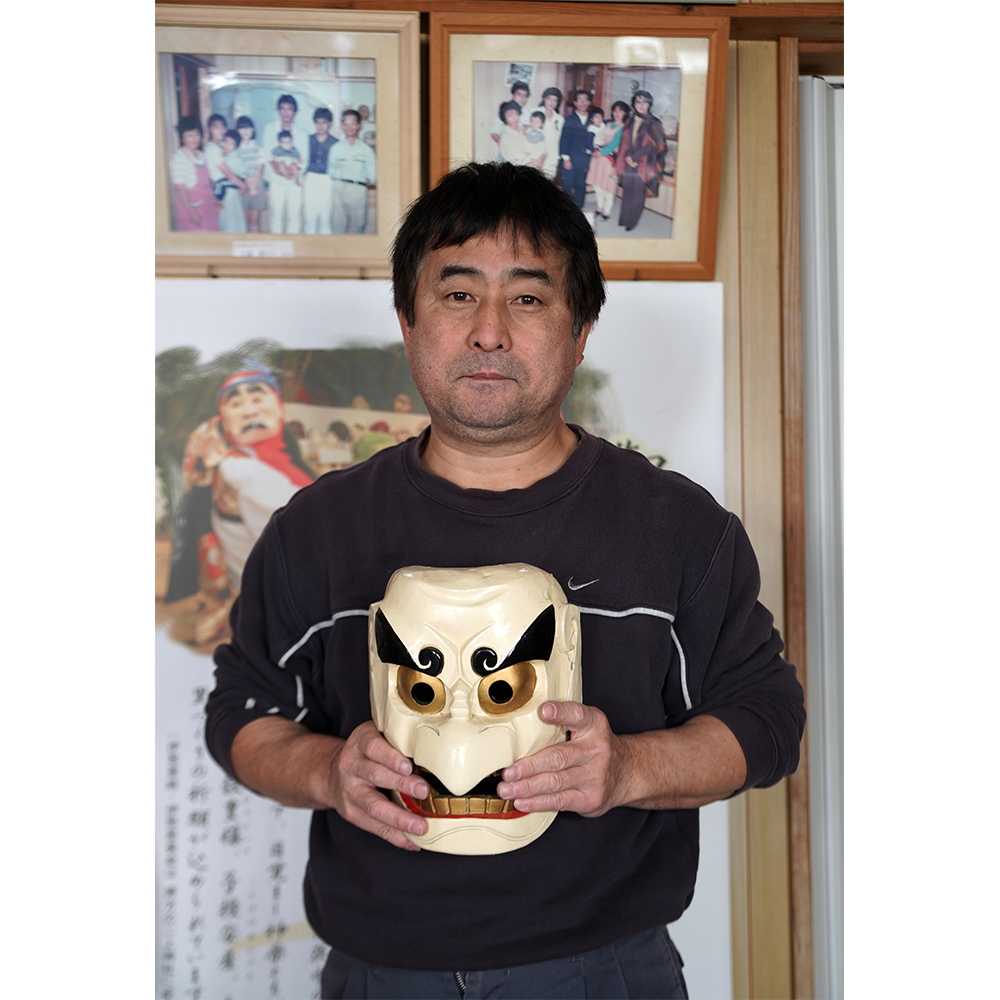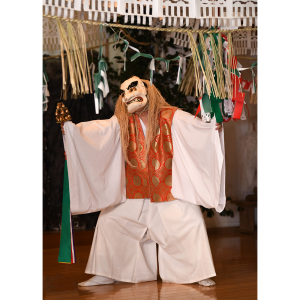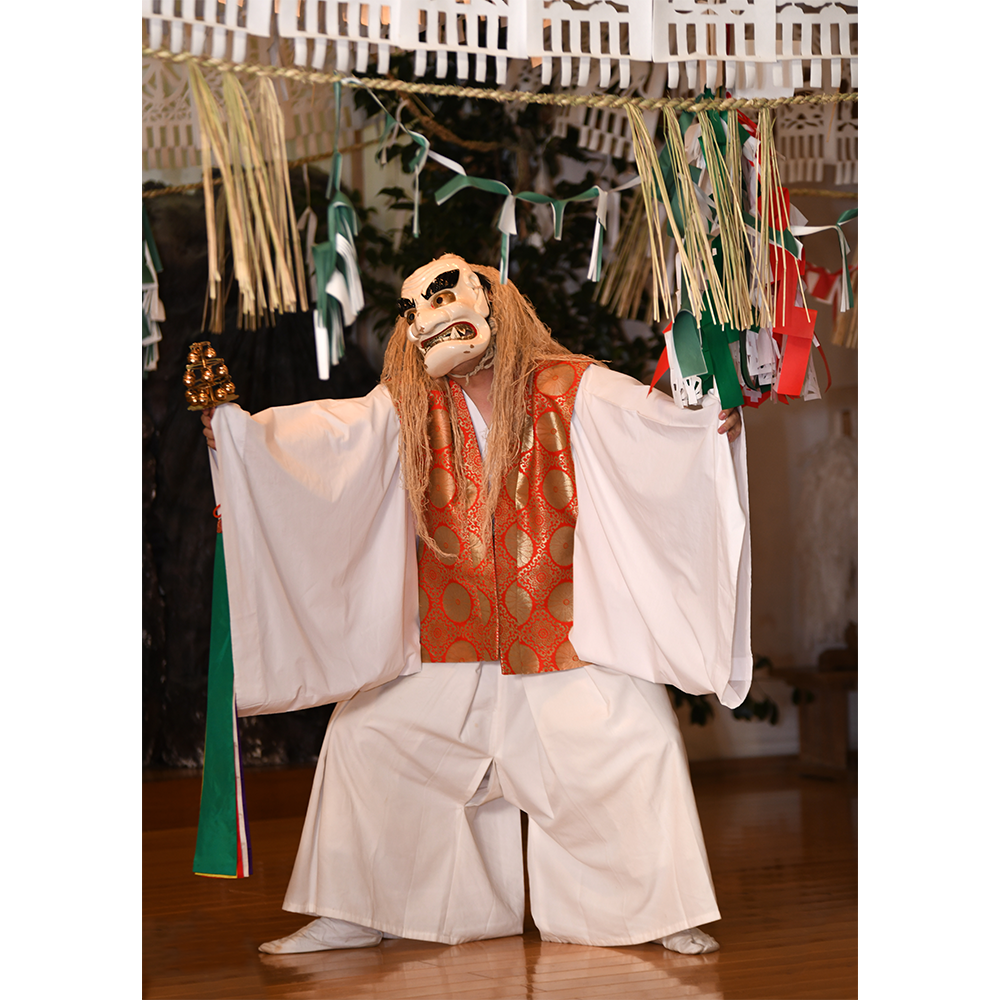TITLE: Tajikarao No-mikoto Mask
TYPE: face mask
GENERAL REGION: Asia
COUNTRY: Japan
SUBREGION: Miyazaki
ETHNICITY: Japanese
DESCRIPTION: Tajikarao No-mikoto Mask
CATALOG ID: ASJP013
MAKER: Hiroaki Kudo (Amano Iwato, Takachiho, 1961- )
CEREMONY: Kagura
AGE: 2019
MAIN MATERIAL: hinoki (Japanese cypress) wood
OTHER MATERIALS: oil-based paint
Kagura is a form of music and dance from the Shinto religion. The Kagura involves maikata, or masked dancers with elaborate costumes and wigs, and hayashikata, or musicians playing the odaiko (large drum), kodaiko (small drum), chochigane (Japanese cymbals), and yokobue (a Japanese flute).
Kagura dance is not totally abstract, but rather is designed to tell a story, usually of Shinto origin. The performance of a dance is intended not just to celebrate a holiday or entertain an audience, but as a religious duty to pray to Shinto gods for a good harvest or fish catch, or protection from disease or natural disaster. Kagura is now commonly performed at temples and in farming villages after the rice harvest to thank the gods for their bounty.
This mask represents the Shinto god Ameno Tajikarao No-mikoto, who created Mt. Togakushi by taking the solid rock door leading to a cave where the sun goddess Amaterasu had hid herself and throwing it toward Nagano. Amaterasu had denied the world light by hiding in a cave after her godly sibling annoyed her, and Tajikarao, the god of strenght and sport, both restored the sun to the world and created a new mountain. The dance reenacts this heroic act.
For more on Japanese Kagura, see David Petersen, An Invitation to Kagura: Hidden Gem of the Traditional Japanese Performing Arts (2007).
Click above to watch a short documentary about the Kagura ceremony of Japan.
